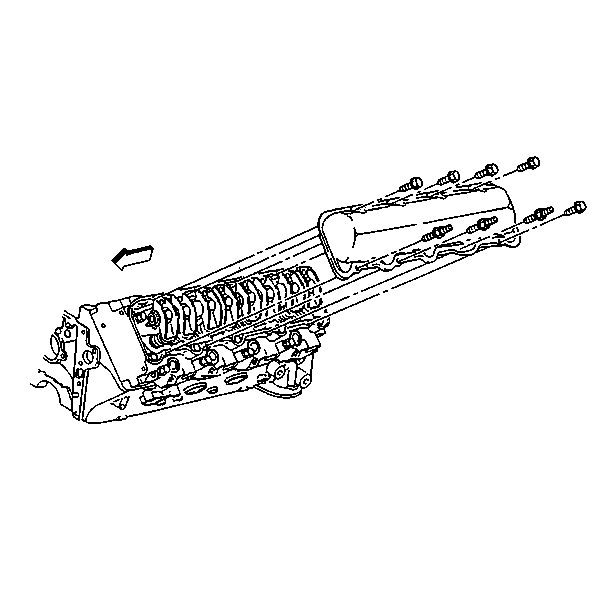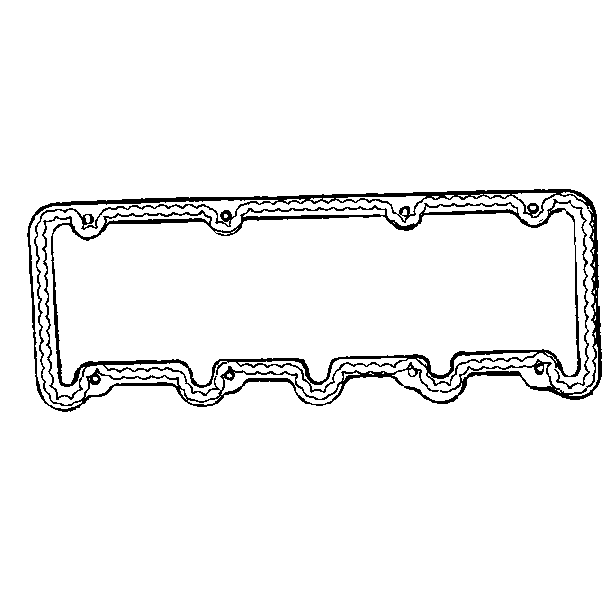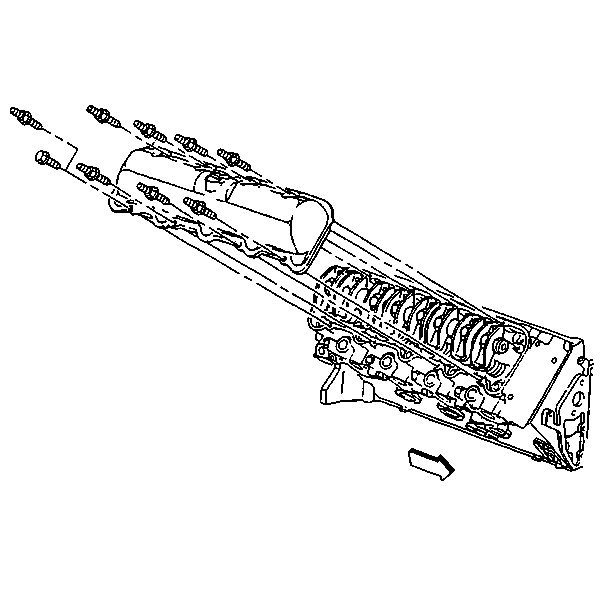Removal Procedures
- Remove the intake manifold. Refer to Intake Manifold Replacement .
- Remove the fuel injection lines. Refer to Engine Controls.
- Remove the CDR valve (right side).
- Remove the CDR hose (right side).
- Remove the engine oil level indicator tube (right side).
- Remove the engine oil level indicator bracket (right side).
- Remove the transmission oil level indicator tube (left side).
- Remove the transmission oil level indicator bracket (left side).
- Remove the fuel return line clip at the valve rocker arm cover stud.
- Remove the wiring harness at the valve rocker arm cover and move aside (left side).
- Remove the electrical connectors at the valve rocker arm cover and move aside (left side).
- Remove the rear generator support bracket.
- Remove the valve rocker arm cover bolts.
- Remove the valve rocker arm cover.
- Clean the RTV from the valve rocker arm cover and cylinder head.
- Remove all loose RTV or pieces that will cause installation interference.
- Clean the oil and grease from the sealing surfaces on the valve rocker arm and the cylinder head. Use a suitable solvent.
- Inspect the valve rocker arm cover sealing flanges for distortion. Replace as necessary.
Important: Do not bend the fuel injector lines in order to ease in the removal of the valve rocker arm cover. Damage to the fuel injector lines will occur.
Important: Mark the fuel line retaining clips and the stud in order to ensure proper reinstallation.

Notice: Prying on the valve rocker arm cover may cause damage to the sealing surfaces. Use a block of wood against the side of the valve rocker arm cover and strike with a hammer in a sideways direction to shear the RTV sealant.
Installation Procedure
- Apply a 5 mm (3/16 in) bead of RTV sealant GM P/N 12345739 to the valve rocker arm covers, inboard of the bolt holes. The sealer must be wet to the touch when the bolts are tightened.
- Install the fuel return line clips.
- Install the fuel injection lines.
- Install the wiring harness and all the electrical connectors at the valve rocker arm cover from the clips and move aside (left side).
- Install the engine oil level indicator tube and bracket (right side).
- Install the transmission oil level indicator tube and bracket (left side).
- Install the CDR valve and hose (right side).
- Install the rear generator support bracket.
- Install the intake manifold.
Notice: Do not allow the RTV sealant to enter any blind threaded hole. RTV sealant that is allowed to enter a blind threaded hole can cause hydraulic lock of the fastener when the fastener is tightened. Hydraulic lock of a fastener can lead to damage to the fastener and/or the components. Hydraulic lock of a fastener can also prevent the proper clamping loads to be obtained when the fastener is tightened. Improper clamping loads can prevent proper sealing of the components allowing leakage to occur. Preventing proper fastener tightening can allow the components to loosen or separate leading to extensive engine damage.


Install the valve rocker arm cover.
Tighten
Tighten the bolts to 22 N·m (16 lb ft).
Notice: Use the correct fastener in the correct location. Replacement fasteners must be the correct part number for that application. Fasteners requiring replacement or fasteners requiring the use of thread locking compound or sealant are identified in the service procedure. Do not use paints, lubricants, or corrosion inhibitors on fasteners or fastener joint surfaces unless specified. These coatings affect fastener torque and joint clamping force and may damage the fastener. Use the correct tightening sequence and specifications when installing fasteners in order to avoid damage to parts and systems.
